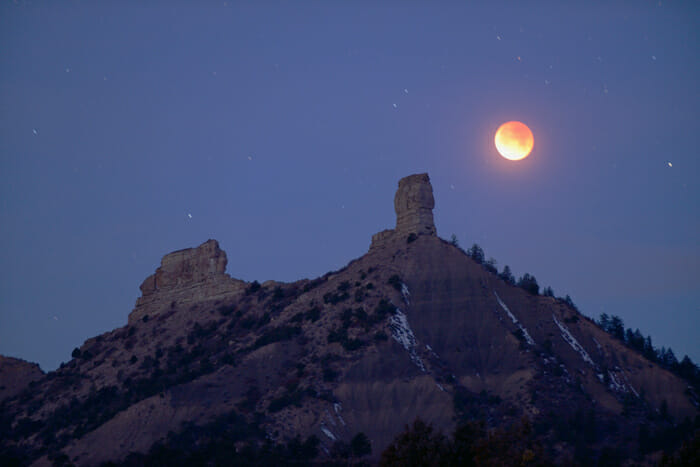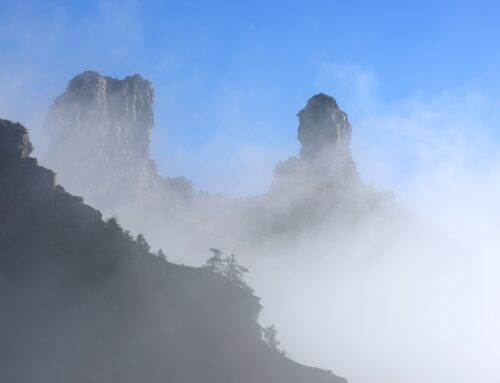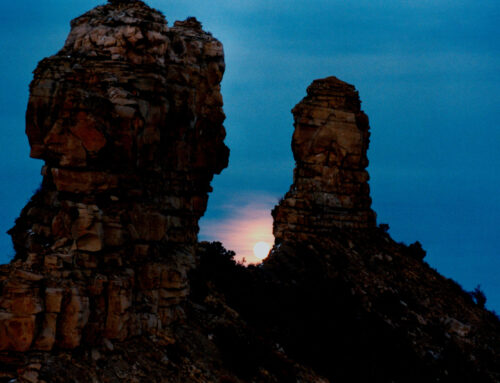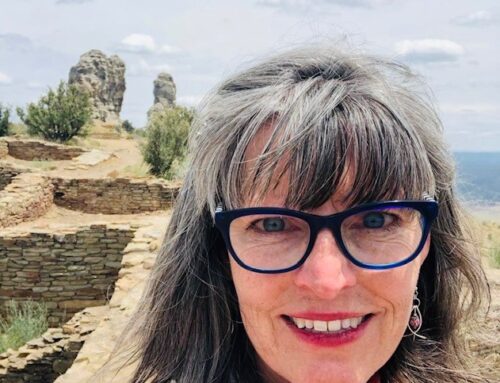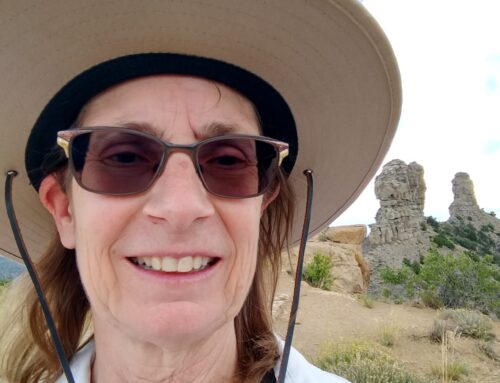By: CRIA Volunteer Howard Rowe
Once again, from our location in southwestern Colorado, this morning’s (February 5, 2018) total lunar eclipse began several hours before sunrise. Typically, that’s not the time of day when I would be found standing in the cold morning air next to my car at a highway turn-off some distance east of the Chimney Rock pinnacles. But eclipses are special things. They’re usually worth a generous amount of inconvenience to observe (and photograph!) a good one. This eclipse was no exception. Besides … this time the full moon was setting in the west at about the same time that the pre-dawn sky was brightening behind me in the east. This meant that there would possibly be some illumination on the Chimney Rock pinnacles (“by the dawn’s early light”?) while the eclipsed moon was visible in the western sky beyond. It offered the chance of getting something other than the pinnacles simply appearing as silhouettes. An intriguing notion for a potentially unusual photograph. Worth getting out of bed for.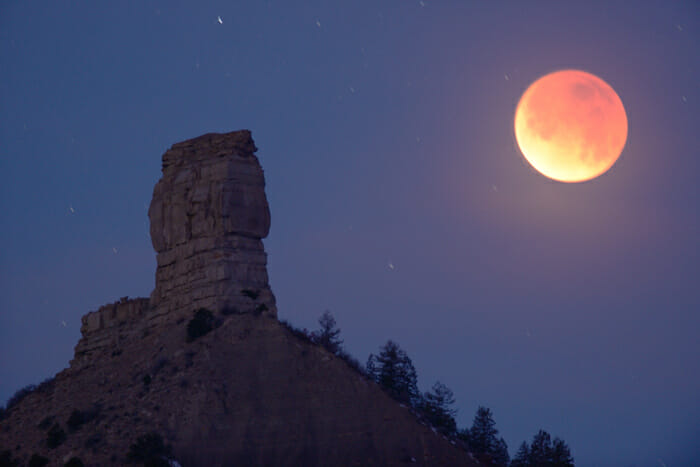
As you’ll see on the attached images, it worked. Mostly. Sure, it would have been much nicer if the moon had been neatly centered between the pinnacles. Being in exactly the right place, however, was not an option. The road that travels along the east side of Chimney Rock passes a series of hills that block the view of the pinnacles. Some of those hills are on private ranch land, and much of the rest is Ute Tribal Territory. Climbing up one of the hills to reach the “perfect spot” is not something that I’d want to attempt alone at 3:00 in the morning … especially with a full load of tripods and cameras. Mountain lions are not unknown here. And trespassing on ranch land is never a good idea. So I made do with the available vista. Deal with it.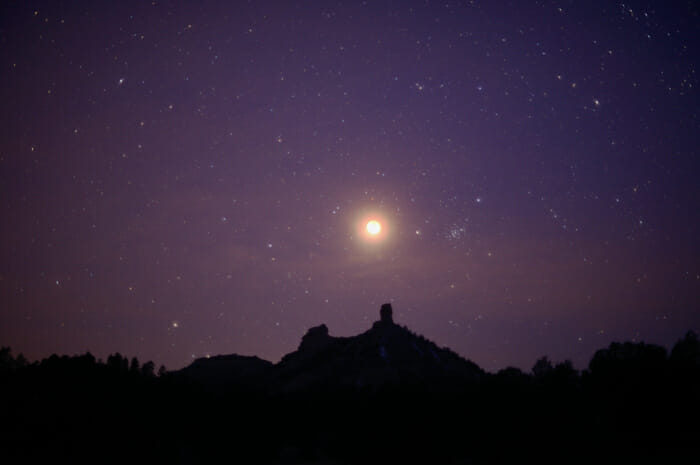
It’s tempting to think about how the ancestral Pueblo people who inhabited the Chimney Rock area a thousand years ago might have responded to a lunar eclipse, or worse yet, a total solar eclipse. Both events would have occurred during the era in which they lived there. It’s easy to imagine the beginning of a mythology in which the moon or the sun were being eaten by monsters. The red coloration of an eclipsed moon might be interpreted as the moon’s bloody death. It’s still a remarkable sight, even without the attendant monsters. All part of the clockwork of the heavens.
I didn’t mention earlier in this story that the temperature outside our house when I was packing the car was 30 degrees. Not bad. Not bad at all. This is comfortable, so I’ll only need my medium-weight coat and a stocking cap. So then I drive the 30 miles over to Chimney Rock, mostly forgetting about the fact that all weather here in the mountains is localized. So when I reach my chosen observing location, in full view of the moon and the pinnacles, the temperature is now 16 degrees. Zowie. Huge mistake! It is cold! So I kept the car running, and would hop in and out and shoot pictures while the moon slowly drifted down towards the horizon. I was also bringing the cameras in and out of the car to keep the camera batteries from freezing. Well … it all worked, and I survived. Maybe the worst part of the experience was when I was done, and I grabbed the large metal tripod that I was using with the telephoto lens. The tripod had not been in and out of the car. Did I mention that I had also decided not to bring any gloves? Silly photographer.


